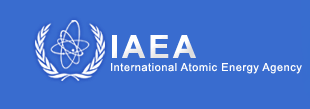Speaker
Mr
Rory Scannell
(UK)
Description
The evolution of the MAST plasma during the L-H transition has been studied in the density range 1.5-3.0x10^19 m^-3. A dithering transition phase, the duration of which depends on the plasma density, is observed before the transition to ELMy or ELM free H-mode. A range of new diagnostic data has been taken during these periods, showing a spin-up of the perpendicular He+ flow correlated with changes in the D-alpha emission. In this density range the power threshold increases with increasing density. As well as the expected power threshold dependency on absolute density, the threshold power is observed to depend on the density evolution prior to the transition. Small changes in fuelling location, plasma current, toroidal field and plasma shape can lead to changes in the power threshold by a factor of two, significantly larger than hose predicted by the scaling. The pedestal evolution between typical type I ELMs in connected double null configuration on MAST show increasing pedestal pressure and width as function time through the ELM cycle. This results in an expanding high pressure gradient region with little increase in peak pressure gradient within this region. It has been shown that the triggering of these ELMs is caused by decreasing stability limit as the transport barrier moves inwards. Application of n=6 resonant magnetic perturbations to the plasma causes ELM mitigation, with smaller but much more frequent ELMs. The pressure gradients in this mitigated period are significantly less than those observed during non-mitigated type I ELMs. This reduction in pressure gradient, which indicates a different stability limit, results from both a decrease in pedestal height and increase in pedestal width.
Work supported by the RCUK Energy Programme and EURATOM
Country or International Organization of Primary Author
Association Euratom/CCFE
Author
Mr
Rory Scannell
(UK)
Co-authors
Dr
Andrew Kirk
(Culham Centre for Fusion Energy)
Dr
Anthony Field
(CCFE)
Dr
Ashwin Patel
(Association Euratom/CCFE)
Dr
Daniel Dunai
(FKI-RMKI, EURATOM Association)
Dr
Geof cunningham
(Association Euratom/CCFE)
Dr
Hendrik Meyer
(EURATOM/CCFE Fusion Association)
Dr
Saarelma Samuli
(Association Euratom/CCFE)
Dr
Sandor Zoletnik
(KFKI-RMKI, EURATOM Association,)

